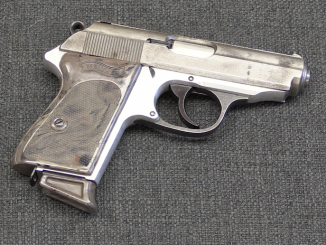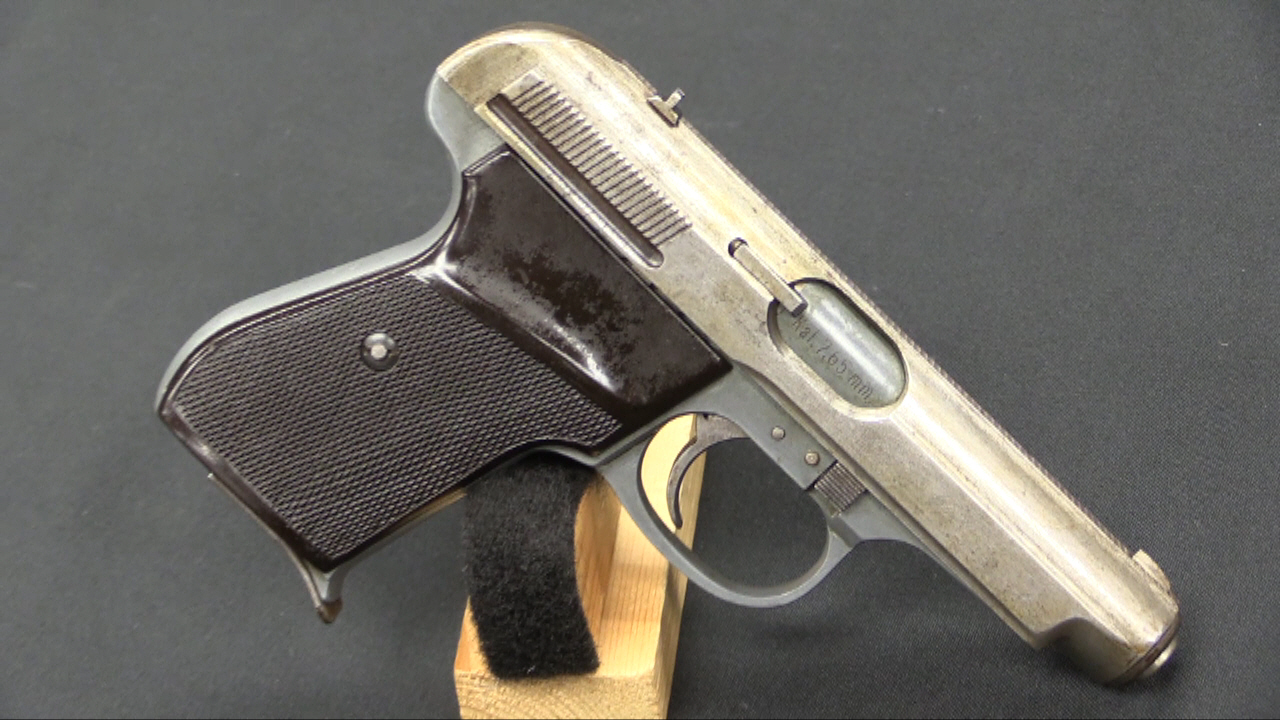This rifle is coming up for auction at RIA here.
Gewehr 71/84: Germany’s Transitional Repeating Rifle
In the ongoing arms race between France and Germany, the Mauser 71/84 was the first German repeating rifle. Paul Mauser began work on it in the late 1870s, patented the design in 1881, and it was adopted formally in 1884. Production began in 1885, with a total of 1,161,148 rifles being delivered by the four major state arsenals (Spandau, Amberg, Erfurt, and Danzig) by 1888 – when it was replaced by the Gewehr 88. With an 8-round tube magazine under the barrel, the 71/84 represented a substantial increase in firepower over the single-shot Mauser 71 and the French 1874 single shot Gras – but it was put into production just in time to be rendered obsolete by the Lebel and its smokeless powder cartridge in 1886.
The 71/84 was perhaps the German rifle with the shortest service life, at barely 5 years. It would come back out as a reserve rifle during World War One, of course, and it also was responsible for a change in Germans arm that would last all the way to the present day – the pull-through cleaning kit. The tubular magazine made it impossible to leave a cleaning rod under the barrel as on the Gew71, and rather than put it on the side like the French and Portuguese, Germany oped to remove it entirely in favor of the then-new pull-through cleaning kit.




I did not know about the lack of cleaning rod. Most of the rifles and PCC’s I own have a Boresnake in the pistol grip. Better than nothing, but not as versitile as a cleaning rod.
I smell Alfred von Kropatschek in here!
I would say, that with rimmed cartridge with blunt-nosed bullets, tubular magazine was most obvious choice. It also might be implemented in relatively long rifles of that era to hold good number of cartridge, possibly also they might found box magazine sticking out as “unelegant” compared to flush tubular-magazined designed.
Of course tubular magazines were easier to implement for rimmed rounds. If one looks at the Vetterli rifles and the various American lever-action rifles for reference, it’s no stretch that development would favor a tube as opposed to the box. A ten-round box magazine for the 11 mm Mauser round would have been a pain in the neck to properly load whether mounted below the chamber, to the side of the chamber, or above the chamber with a lateral offset. I saw the loading process for the Lee-Metford (with no charger guide). It is NOT inherently user friendly. Imagine loading a box magazine with those large black-powder cartridges Metford style. Do it wrong, and you lose all the ammunition or ruin the magazine and the bolt… I could be wrong.
The Kropatschek rifle upgraded the Mauser Gewehr-1871’s feed system from single-shot to shotgun-style-8-round-tube-magazine so that the shooter has spare rounds available after firing the first round.
“71/84 was perhaps the German rifle with the shortest service life, at barely 5 years.”
So it looks that progress in rifle technology at that time was faster than anyone excepted.
This statement lead to question: which pattern of rifle (or fire-arm) was default pattern of that weaponry in history? I think Russian Berdan I rifle is strong candidate, adopted in 1868, it was soon superseded by Berdan II rifle adopted in 1870.
Very interesting! But Ian didn’t say what that round, blue thing is on the bolt just forward of the bolt handle. Unusual.
That’s the bolt-stop and it’s pinned screw! Would you rather the bolt fly out of the chamber when opening the action?
Had one of these years ago.It was fun to shoot with smokeless Dominion ammo. One of those pieces I wish I hadn’t sold
Feeding from magazine to chamber seems purely sensitive to gravitiy. Turn the gun upside down and you feed the ground instead of the barrel. Box magazines do not have this weakness.
No soldier is stupid enough to operate his rifle upside down. If you are doing that, the drill sergeant will kick you in the groin!
Conqurtulations… What about leaning sidewards….
What about cycling that rifle in zero-gravity environment? What will happen?
Nonetheless, I think that from point of view of 1880s Prussian tactics inability to cycle rifle upside down was not considered to be significant disadvantage.
In the last quarter of 19th century, various magazines system were tested, tubular and box become most popular in military applications in Europe, as they were relatively simple even if their capacity was lower than more advanced magazines, notice for example early Mannlicher rifle (1880) magazine, see drawing: http://stvol.in.ua/istoriya-okhotnichego-oruzhiya/vintovka-manlikhera-obraztsa-1880-g
it was placed in stock, capacity was 18 and there were 3 parallel tubes, each holding its portion of cartridge, and whole assembly of 3 tubes was rotated to allow feed of cartridge from subsequent tubes.
I was surprised it was never a conversion of the single shot Mauser 71. I had always assumed one rifle had been converted to the other in a cost-saving exercise. Interesting.
Dear sir I got a gun. It is a m71 with a date stamped 1883 and st. Denis I would like to find out more about it by help would be appreciated dan
I have a Mauser 71/84 rifle It has been shortened I am assuming as the 2nd metal ring on the barrel is only about 3 inches from the 1st ring s.# 2591 man. date 1887 Danzig What is this gun worth?